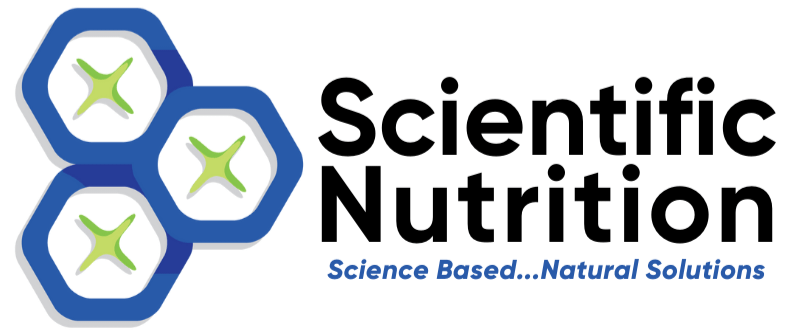Remote and Hybrid Employees Need Wellness Support
Your company is paying handsome salaries to its remote and hybrid employees and offering them bonuses and insurance. This is something worthy of appreciation. But do you think that’s enough?
No. Especially if you have remote and hybrid employee work setups.
There is no doubt that working remotely or hybrid is beneficial for employers and employees. It saves money, time, and energy and promotes flexibility and freedom. But it’s not all sunshine and rainbows…it comes with unique challenges and problems.
A survey by TELUS, published in Forbes, states that most remote workers quit their jobs because of disturbed work-life balance. The survey also states that 45% of remote and hybrid workers feel less mentally healthy when working from home!
These stats make sense when you consider that;
- Working from home blurs personal and professional life boundaries.
- Having no colleagues around ignites a sense of loneliness and lack of support.
- The constant tension of being online the whole day and delivering the work makes workers anxious.
So, your remote workers need your support for their wellness. This blog will provide practical suggestions and strategies to improve your employees’ mental and physical well-being.
Do you care about your business and employees? Read on.
5 Ways to Support Wellness in Remote and Hybrid Employees Work Spaces
Wellness is directly proportional to productivity. The more productive your staff is, the more revenue your company generates. Wellness programs also improve employee loyalty to your company. However, WHO (World Health Organization) found that workspace anxiety and stress cause $300 billion in business losses each year in the US alone!
I don’t want your business to contribute to this loss. So here are the 5 top practical ways you can start implementing today to reduce stress, anxiety, a lack of productiveness, and to improve the wellness of your employees.
1. Offer a virtual comprehensive wellness program.
A comprehensive virtual wellness program offers everything necessary to support your employees’ well-being. This program could include various resources and activities to address physical, mental, and emotional health needs.
You can hire professionals to provide services like virtual yoga classes, meditation sessions, nutrition workshops, and mental health counseling, or you can leverage online wellness platforms.
Such programs also provide access to informative webinars or workshops on stress management, work-life balance, and mindfulness techniques. Make sure that these resources are easily accessible. To encourage active participation, schedule regular check-ins and gather feedback from employees for improvement.
2. Arrange virtual wellness fun activities.
In remote or hybrid workplaces, your employees often feel isolated and lonely. Providing opportunities for virtual wellness activities is a great way to nurture mutual connections and boost morale.
Here are some virtual fun activity ideas for your employee wellness;
- Schedule regular virtual team-building exercises incorporating wellness elements, such as online fitness challenges, virtual cooking classes, or group meditation sessions.
- Encourage employees to share their wellness tips and experiences during these activities, fostering a supportive and collaborative environment.
- Organize virtual social events like game nights or coffee chats to help combat feelings of isolation and promote community.
3. Educate your remote employees about mental health issues.
There are many ways to tackle and address mental health issues for in-house teams. Assessing the mental health of your remote team can be challenging. That’s where you need to educate your employees about mental health issues.
Provide educational resources and training sessions that raise awareness about common mental health issues, such as anxiety, depression, and burnout, as well as strategies for coping and seeking help.
Many employers offer Employee Assistance Programs (EAPs) as part of their benefits package. These programs provide confidential counseling services, referrals, and resources for mental health concerns. There are many online communities and resources that you can share with your employees. Keep in mind that heavy metal toxicity can exasperate mental and emotional issues physically so by working with me, we can take care of many of their issues.
Some helpful resources are;
- Mental health apps like ‘Headspace’ or ‘Calm.’
- Mental health education websites like the National Alliance on Mental Illness (NAMI) or Mental Health America (MHA).
4. Offer PTO (paid time off) and health stipends offer more support.
Paid time off (PTO) allows individuals to recharge and spend quality time with loved ones. It reduces the risk of burnout and stress. Employees can take guilt-free breaks from work by offering PTO, which leads to increased productivity and job satisfaction. There are various types of PTO, including vacation days, sick leave, and personal days, each serving different purposes and catering to individual needs.
Similarly, a health stipend also helps support remote workers’ physical well-being. It provides financial assistance to cover medical expenses and wellness activities.
Health Reimbursement Arrangements (HRAs), Health Savings Account (HSA), Flexible Savings Account (FSA) are common types of health stipends with two main options:
- Individual Coverage Health Reimbursement Arrangement (ICHRA): ICHRA allows employers to reimburse employees for individual health insurance premiums and qualified medical expenses, providing flexibility and choice in healthcare coverage.
- Qualified Small Employer Health Reimbursement Arrangement (QSEHRA): It is designed for small employers with fewer than 50 full-time employees and offers tax-free reimbursements for medical expenses, including individual or family health insurance plans.
It depends on core factors, such as employee needs, budget constraints, and administrative requirements. So select what best suits you.
5. Communicate openly and demonstrate trust.
Open communication is the foundation of a healthy and productive remote work environment. It builds trust and strengthens relationships among team members. If your employees are open to sharing their thoughts, concerns, and feedback, it creates a culture of collaboration and respect. Regular check-ins, team meetings, and one-on-one sessions provide meaningful dialogue and relationship-building opportunities as well as trust.
Make your communication process effortless and accessible for all. This sounds cliche and generic, but believe me, a little change in how you talk to your employees creates a big difference. Try it for yourself and see the results.
Hair Analysis and Remote and Hybrid Employee
The reality is that your business is dependent on your workforce. By using Hair Analysis along with our Health For Life Corporate Wellness program, you will fortify your greatest asset, your employees. I can help them with nutrition, detoxification, and so much more on the deepest level individually.
You can ignore your employees’ wellness and let your business face the consequences or you can actively and consciously take care of their mental and physical well-being. This will allow your company flourish.
It’s all up to you now.
Traditional working methods, such as the 9-5 office model or 40-hour workweek, are changing. Surveys show that employees prefer to work remotely or in hybrid setups. Remote work also gives you the edge to hire top talent from all over the world.
To get the most out of remote and hybrid work models, you must ensure your employees’ wellness and overall well-being. If you have not signed up for a wellness plan for your employees, I can help!
Let’s chat to discuss your employees’ wellness for transformational ROI and stronger team within your business.
Further studies and readings
https://www.ncbi.nlm.nih.gov/pmc/articles/PMC9517068/
http://dx.doi.org/10.5539/ibr.v14n3p41
https://www.littler.com/files/2023_littler_employer_survey_report.pdf
Copyright Scientific Nutrition, LLC 2024




